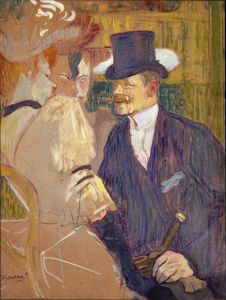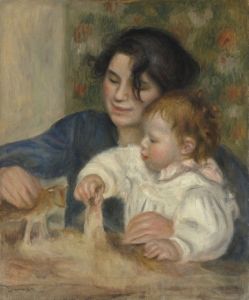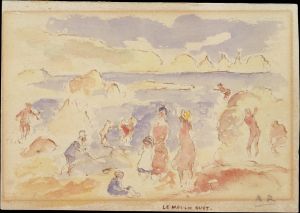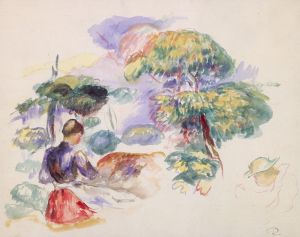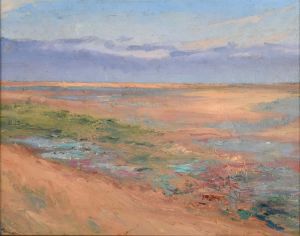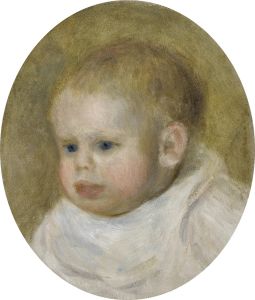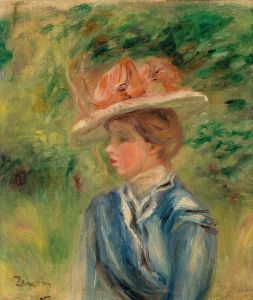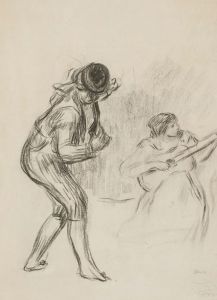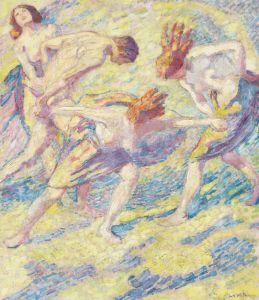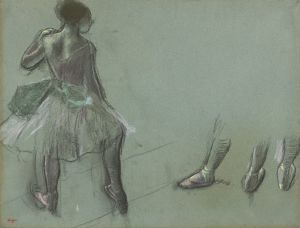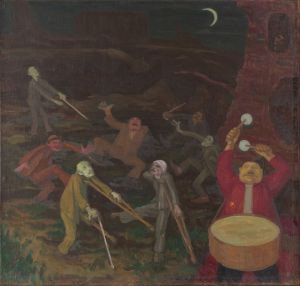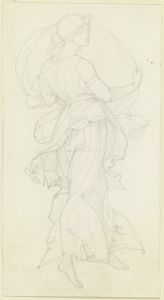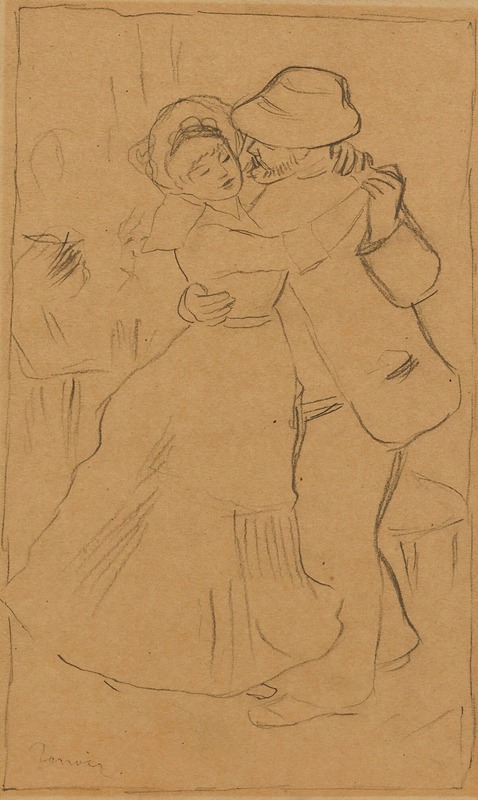
La danse à bougival
A hand-painted replica of Pierre-Auguste Renoir’s masterpiece La danse à bougival, meticulously crafted by professional artists to capture the true essence of the original. Each piece is created with museum-quality canvas and rare mineral pigments, carefully painted by experienced artists with delicate brushstrokes and rich, layered colors to perfectly recreate the texture of the original artwork. Unlike machine-printed reproductions, this hand-painted version brings the painting to life, infused with the artist’s emotions and skill in every stroke. Whether for personal collection or home decoration, it instantly elevates the artistic atmosphere of any space.
"La danse à Bougival" (Dance at Bougival) is a celebrated painting by the French artist Pierre-Auguste Renoir, completed in 1883. Renoir, a leading figure of the Impressionist movement, is renowned for his vibrant light and saturated color, often focusing on people in intimate and candid compositions. This particular painting is one of a series of three large-scale works depicting dancing couples, the other two being "Dance in the Country" and "Dance in the City."
The painting captures a couple dancing in the open air in Bougival, a suburban town near Paris that was a popular leisure destination for Parisians in the late 19th century. The scene is lively and full of movement, characteristic of Renoir's style. The couple is centrally placed, with the woman wearing a pink dress and a hat adorned with flowers, and the man dressed in a blue suit and straw hat. They are absorbed in their dance, seemingly unaware of the viewer, which adds to the intimacy and immediacy of the scene.
Renoir's use of color and light in "La danse à Bougival" is particularly noteworthy. The artist employs a palette of soft pastels and vibrant hues to create a sense of warmth and vitality. The background is rendered in loose, fluid brushstrokes, typical of Impressionist techniques, which helps to convey the atmosphere of a sunny afternoon. The figures are more precisely defined, with careful attention to the details of their clothing and expressions, highlighting Renoir's skill in capturing human emotion and interaction.
The painting is also significant for its depiction of modern life and leisure, a common theme in Impressionist art. Bougival was known for its open-air cafes and dance halls, where people from different social classes could mingle and enjoy themselves. By choosing this setting, Renoir not only captures a moment of joy and relaxation but also reflects the social changes of the time, as urban dwellers sought respite from the hustle and bustle of city life.
"La danse à Bougival" is housed in the Museum of Fine Arts in Boston, Massachusetts. It was acquired by the museum in 1937 and has since been one of its highlights. The painting is celebrated for its dynamic composition, vibrant color palette, and the tender depiction of the dancing couple, making it a quintessential example of Renoir's work and the broader Impressionist movement.
In summary, "La danse à Bougival" by Pierre-Auguste Renoir is a masterful representation of a joyful moment in a suburban setting, characterized by its vibrant colors, dynamic composition, and intimate portrayal of human interaction. It remains a beloved piece in the collection of the Museum of Fine Arts, Boston, and a testament to Renoir's enduring legacy as a leading figure of Impressionism.





